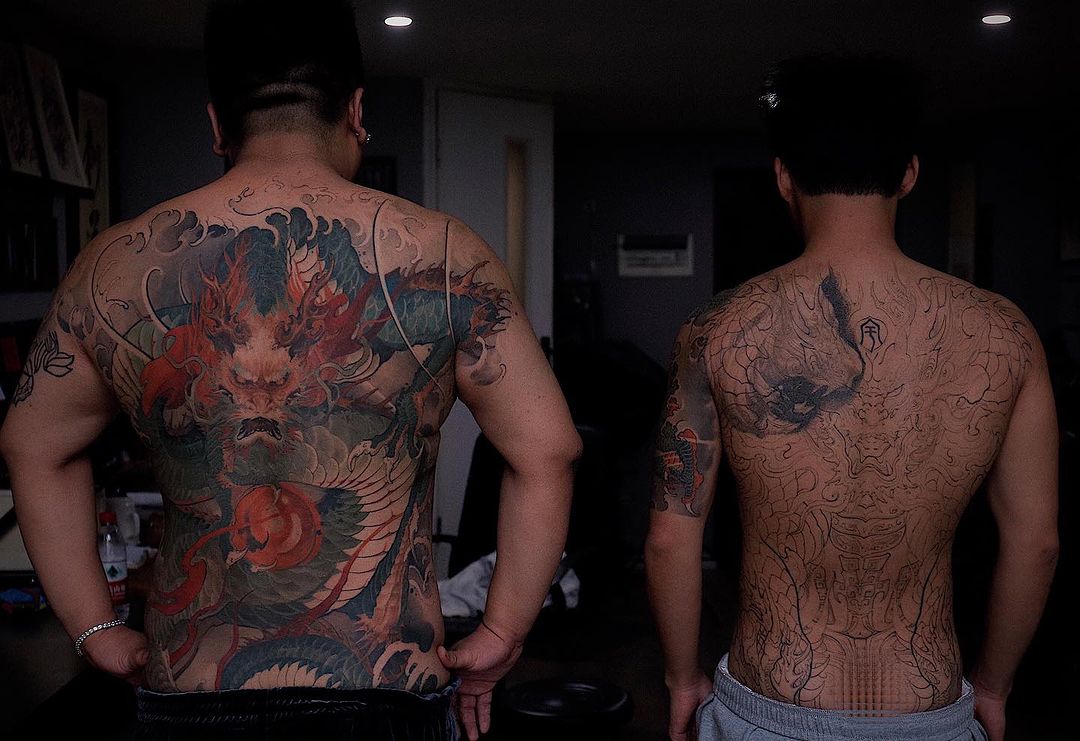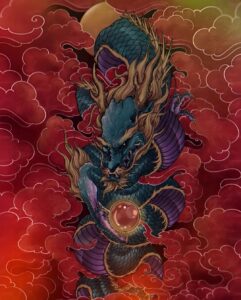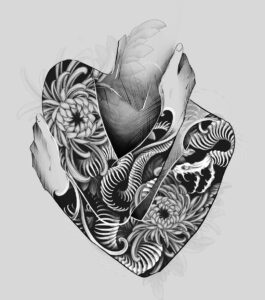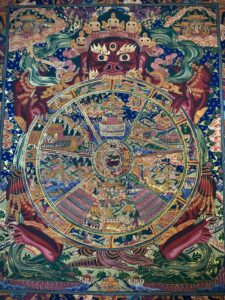From its historical decline to rise in modern society, see how Chinese tattoos are regaining prominence in contemporary culture.
China’s Tattoo Scene
Much like the vast expanse of China – be it in terms of its geographic size, global influence, or its population – the tattoo scene in China is not just alive, it’s throbbing with energy. Despite the government’s efforts to censor body art in media, the development driven by the younger generation continues to shed the old-fashioned stigma attached to tattoos. This cultural shift is redefining Chinese tattoos, with it reflecting the rich cultural heritage and contemporary influences, embodying a fusion of the past and present.
Traditions in Ancient China
The Chinese term for tattooing, ‘纹身,’ is mentioned in early Chinese texts, ranging from historical records, penal codes, to literary works. Tattoos in China can be traced as far back to the Shang Dynasty (1600-1045 BC), the earliest ruling dynasty recorded, when Taibo ‘泰伯‘ and Zhongyong ‘仲雍’ tattooed themselves to gain acceptance of the indigenous people of the Yangtze River Delta. Tattoos during this time served various purposes, including personal identity and ornamental decoration.
The Song Dynasty (960-1279) witnessed a gradual decline in tattooing, with the practice fading even further during the Ming (1368-1644) and Qing (1644–1911) eras. An intriguing facet of Chinese tattooing was the use of punitive tattoos, such as branding the faces of criminals with indelible ink, as a form of punishment. The influence of Confucian text Classic of Filial Piety ‘孝經’ played a pivotal role in discouraging tattoos, as they were considered disrespectful to one’s parents and ancestors:
These historical nuances reveal the complex interplay of culture and tradition in shaping the perception of tattoos in China.
Age of Censorship
While punitive tattooing has faded into history, a lingering perception still associates tattoos with negative connotations. However, among certain groups, tattoos symbolize courage or social recognition, representing a shift away from the traditional stereotypes. Within the criminal underworld, tattoos hold significance as markers of membership and identity, reinforcing their dual symbolism in society. Although Chinese law does not impose mandatory restrictions on adult tattooing, certain institutions including government agencies have their own policies regarding tattoos in professional settings.
Since 2018, the Chinese government started the ban of public figures with tattoos from appearing on television. The country’s media regulator (SAPPRFT) now “specifically requires that programs should not feature actors with tattoos or depict hip hop culture, sub-culture, and dispirited culture,” describing them as “alienated from the Party and the country.” In 2021, the national football team was prohibited from having tattoos, requiring those already having them to remove or covered with tape or long sleeves.
Revival of the Dragon
Despite efforts to suppress its rise, Chinese perceptions surrounding tattoos are undergoing change. The resilience of tattoo culture is evident in the flourishing of large-scale events like the Langfang Tattoo Convention and the Hong Kong China International Tattoo Convention, demonstrating that interest in tattoos remains unwavering. Notably, a growing trend has emerged as more women embrace tattoos, challenging traditional gender norms and adding their voices to this evolving narrative. The impact of the COVID-19 pandemic briefly interrupted the tattoo community’s gatherings, but even after multiple years of hiatus, tattoo associations are now resuming exhibitions with increased regularity. These gatherings serve as hubs for the development of tattoo technology, the exploration of diverse styles, and the infusion of foreign perceptions into the Chinese tattoo scene. As a result, they are gradually influencing domestic attitudes, making Chinese society more tolerant and accepting of tattoos.
Young individuals and artists are rediscovering the traditional art of tattooing, using it as a powerful form of self-expression and a means to assert their cultural identity. Artists are pushing boundaries and experimenting with an extensive range of styles, encompassing everything from traditional Chinese motifs to modern and abstract designs. While some artists may still draw inspiration from others’ work, the overall quality of tattoos have improved. This has led artists to explore various design styles, including distinctive Chinese-inspired designs.
In this evolving landscape, the dragon of the east rises once more, showing that no force can suppress the innate human desire for self-expression and the celebration of culture through body art.
Featured Photo: 王祥宇 (@skyutattoo) of Chengdu, Sichuan.




